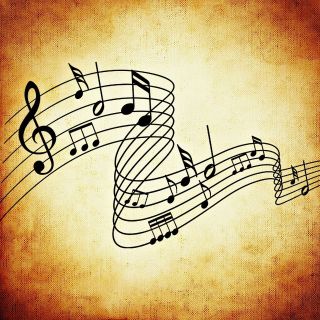Therapy
Aesthetics—When You Feel the Power of the Art
Why do the creative arts work as therapy? It's the aesthetics of the art.
Posted July 23, 2024 Reviewed by Margaret Foley
Key points
- The creative arts therapies are evidence-based practices driven by education and research.
- We "feel' art like nothing else, and have physical reactions to art.
- Art is essential to well-being.
Aesthetics—When you "feel" it. When you "feel" the power of the art. When it all comes together in perfect harmony—song, performance, message, connection—there is a physical reaction to the art. You experience the art on a level that is beyond words. It’s almost spiritual. This could be music: a live performance (Norah Jones at the Apollo Theater in Harlem) or a recording (Ella & Louis’s Porgy and Bess…on vinyl, of course). This could be seeing a piece of art in a museum, or on a wall in downtown Baltimore. A ballet dancer’s "lines," or a street drummer in the subway. A piece of theater. A poem. A book. A story. Architecture in Europe…or on the Lower East Side of Manhattan. A comic book. When you see art that touches you…you "feel" it. You feel it deeply. You feel it internally. You feel it in a way that you cannot explain. And it’s for this reason that the creative arts work as therapy. Because of—not in spite of—the aesthetics. The art.
Music Therapy

Music therapy, like all creative arts therapies (art therapy, drama therapy, dance therapy, and so on), is a combination of science and art. It’s quantitatively and qualitatively measured. Research statistics show the outcomes of the intervention in producing change. There are multiple academic journals dedicated to music therapy research and many other scientific journals that publish music therapy research (including the American Journal of Critical Care, in which I’ve had two music therapy research studies published).
However…there is also the aesthetics, the aesthetics of the art. In fact, beyond all of the science, the research, the evidence-based practice, and so on, I believe that aesthetics is the most powerful element—the crux of the paradigm—of creative arts-based therapies. It’s the music. It’s the art. After all, "music" is the first word of music therapy, and "art" is the first word of art therapy.
I was speaking about this idea, the power of the art in the therapy, with a music therapy group that I facilitate with the organization Life With Cancer. I shared this video clip with them:
I’ve seen this video clip of Sara Bareilles performing her powerful take on "Goodbye Yellow Brick Road" over 100 times. And I "feel" it every time. I feel it physically—the aesthetic power of this performance. I feel the power of the art. I feel the power of the music. I literally feel it every…single…time.
After watching, the group also felt it deeply. They felt the aesthetics of the art. Some words mentioned were: “Powerful.” “Awe-inspiring.” “Emotional.” Someone said, “It was tingling.” Another, “It brought me to tears…and I didn’t even realize it until it was over.” They related to the overall power of the art. They felt it.
They also related to the overall power of the art within the context of their journeys in battling or living with cancer. Someone mentioned “the road” and equated it to “the roads that we are all on.” Someone else said, “I felt like she (the singer) was fighting something within, she wanted to break out. She really wanted to break out. I feel that way too. I have to look beyond the road, the cancer journey, and live my life. I can’t let it rule me. I really related to the lyric, 'I’ve finally decided my future lies, beyond the yellow brick road…'" And there it is.
This Is Music Therapy at Its Core
This is music therapy. This is using the music, the aesthetics of the art, to reflect on and find meaning within the internal struggle. This is the music providing empathy and prompting expression—what may have been stuck inside, or the deep inner thoughts you can’t find words to describe. This is music therapy at its core.
And how did we get there? It all started with the aesthetics. The art. The beauty of the art. The physical "feeling" of the art. The connection created by the art. I see it all the time. The breakthrough. The release as a result of the art. The feelings of empowerment. The resolve. The power of the music. The power of the art.
There are many elements involved in music therapy. But it all starts with the art, the aesthetics. Music, like all of the arts, creates emotion. It makes us "feel" something. That is why we rely on the arts when we need something more, when we are feeling down, feeling pain, need a boost, need energy. All the science measures and explains the outcomes, but nothing can really measure or explain the "feelings" of experiencing the art. And that is why music therapy works. That is why the creative arts therapies work. Art is essential. Art is essential to well-being. And when it comes right down to it…it really is all about the aesthetics.
“The purpose of art is washing the dust of daily life off our souls.” —Pablo Picasso
The healing power of music (and the arts)…




